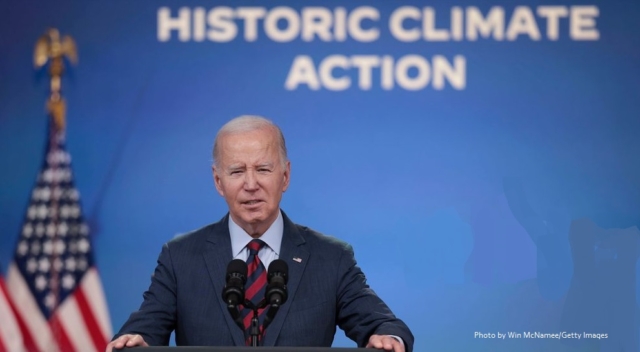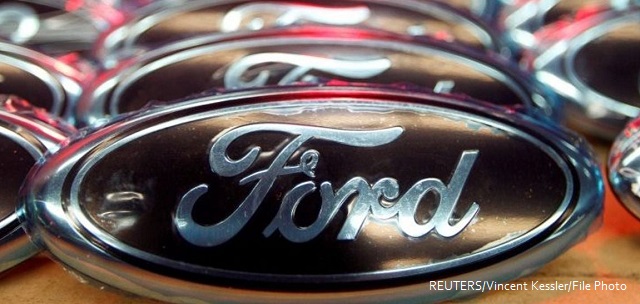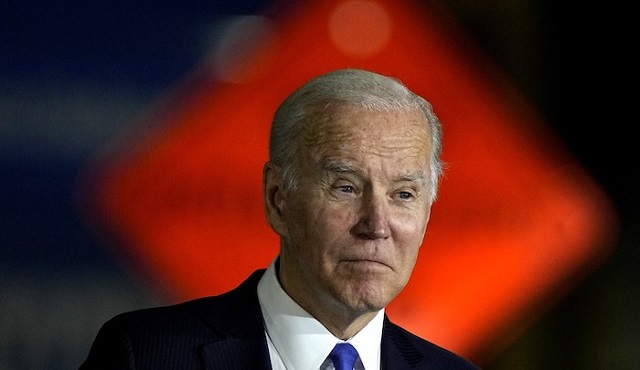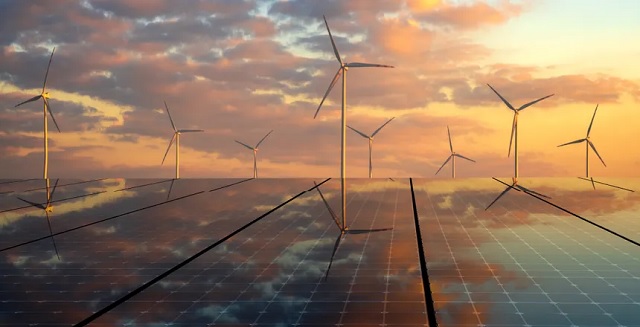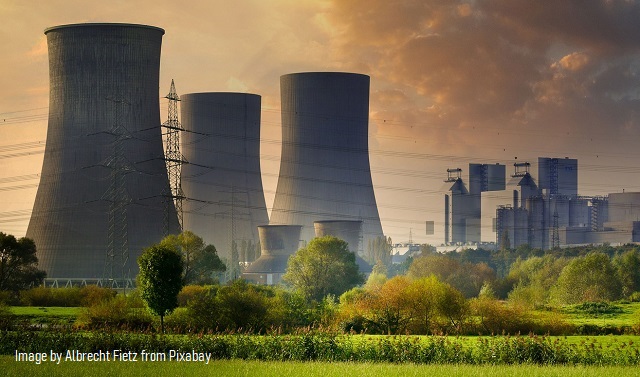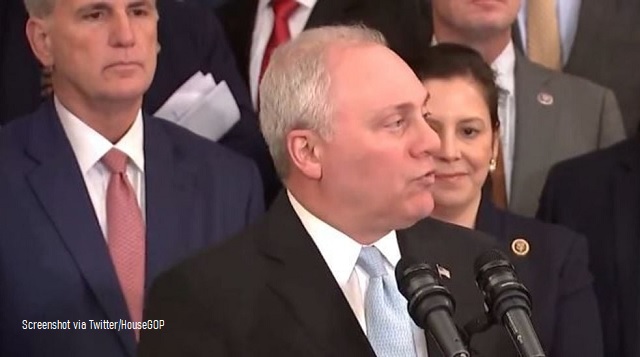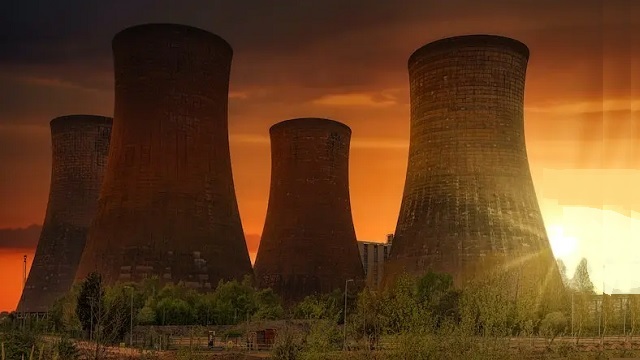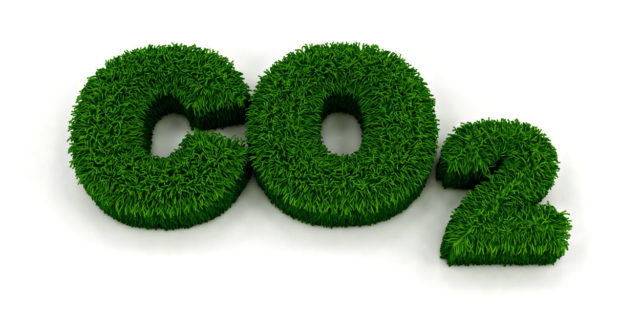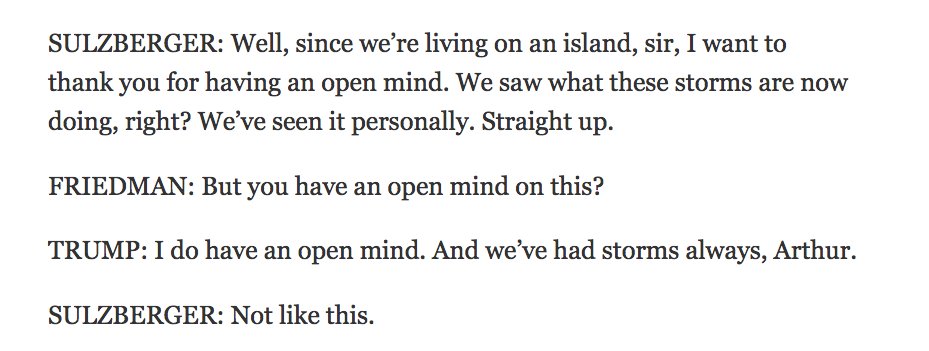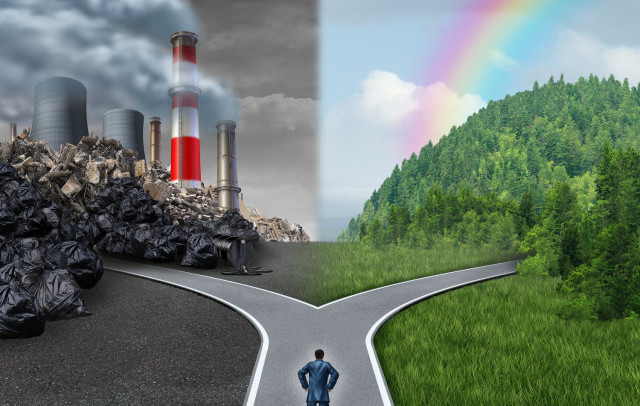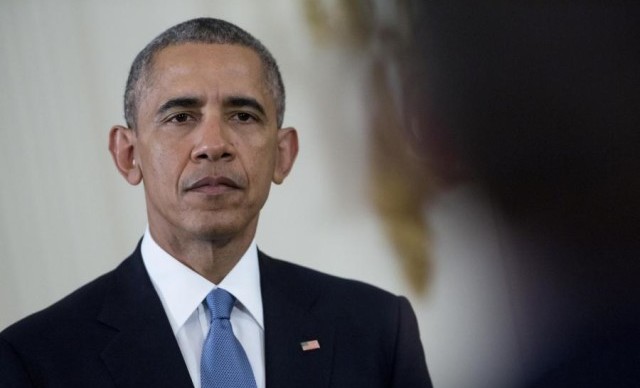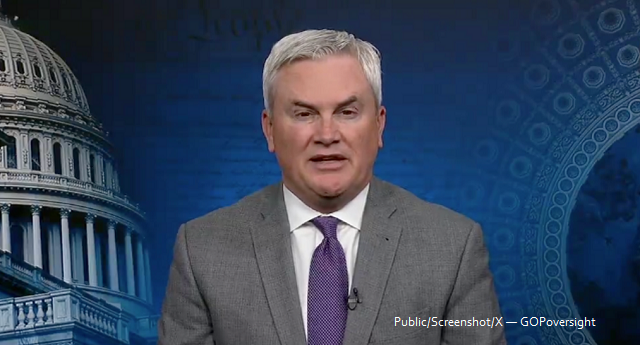
House Oversight Committee Chairman James Comer released bank records Wednesday showing President Joe Biden previously took a $40,000 check from his family members soon after they received the money from Chinese business associates.
Comer posted a video on X outlining bank records which show how various Biden family members took money from Chinese business associates and wired it to Joe Biden shortly thereafter.
“Well, not only did he lie about his son Hunter making money in China, but it also turns out that $40,000 in laundered China money landed in Joe Biden’s bank account in the form of a personal check,” Comer says in the video. “First, Northern International Capital, a Chinese company associated with CEFC, wired $5,000,000 to Hudson West III, a joint venture established by Hunter Biden and a CEFC associate.”
“Then, Hudson West III sent $400,000 to an entity owned and controlled by Hunter Biden. Next, Hunter Biden wired $150,000 to Lion Hall Group, a company owned by Joe Biden’s brother James and sister-in-law Sara Biden. Sara Biden then withdrew $50,000 in cash from Lion Hall Group,” Comer continues.
“Later the same day, she deposited it into her and James Biden’s personal checking account. A few days later, Sara Biden cut a check to Joe Biden for $40,000. The memo line of the check said, ‘loan repayment.’”
The Oversight Committee released a memo containing bank records of the transactions between the Biden family and its Chinese business associates which resulted in Joe Biden taking $40,000 of Chinese money in September 2017. Hunter Biden told his office manager he was “office mates” with Joe Biden and CEFC in late September 2017, around the time Joe Biden received a $40,000 check from money originating in China.
READ THE MEMO:
The bank records indicate Hunter Biden wired $400,000 to his Owasco account on Aug. 8, 2017, the same day Hudson West III was sent $5 million. He sent $130,000 from Owasco to his Rosemont Seneca Advisors LLC account, an LLC he previously used to purchase his Porsche.
Hunter Biden wired $150,000 from Owasco to James and Sara Biden’s Lion Hall Group on Aug. 17, 2017, the bank records show. Lion Hall’s balance was reduced to $115,822 because of purchases made between Aug. 14 and Aug. 25, 2017, after the funds came in from Hunter Biden.
Sara Biden wired $50,000 from Lion Hall on Aug. 28, 2017, and $50,000 was deposited into her personal account with her husband on the same day. Sara and James Biden’s personal account had a $46.88 balance prior to the $50,000 deposit, bank records show. She sent the check to Joe Biden on Sept. 3, 2017, for a “loan repayment” less than a month after James Biden’s business relationship with Hudson West III began.
James Biden’s Lion Hall Group took payments directly from Hudson West III throughout 2018 for a total of more than $76,000, the bank records show.
The memo lays out the Biden family’s relationship with CEFC, which began when Joe Biden was vice president, according to an FBI FD-302 summarizing an interview with Hunter Biden’s former business associate, Tony Bobulinski.
“CEFC had used its relationship with HUNTER BIDEN and JAMES BIDEN – and the influence attached to the BIDEN name – to advance CEFC’s interests abroad. HUNTER BIDEN and JAMES BIDEN did not receive any monetary compensation for their assistance in these projects. HUNTER BIDEN and JAMES BIDEN did not receive any compensation because JOSEPH BIDEN was still VPOTUS during this time period,” the document reads.
Bobulinski provided the FBI with a hard drive full of communications with Hunter Biden, and told the FBI the New York Post’s Hunter Biden laptop reporting was real, the FD-302 form states.
The New York Post first reported on the contents of Biden’s abandoned laptop in October 2020, ahead of the presidential election. One email thread shared by the New York Post included an email from Hunter Biden’s business associate James Gilliar in which he floated giving Joe Biden a 10% equity stake in a business deal.
“10 held by H for the big guy?” Gilliar asked Hunter Biden, Bobulinski and former business associate Rob Walker. The $40,000 Joe Biden received appears to be a 10% cut of the $400,000 Hunter Biden wired to himself from the Hudson West III business in August 2017.
In the email thread, Gilliar appeared to be referring to a proposed $10 million joint venture with CEFC called “sinohawk,” and Bobulinski said he spoke about the deal with Joe Biden at a Beverly Hills, California, hotel in May 2017.
“BOBULINSKI stated that he was in possession of multiple texts from HUNTER BIDEN and JAMES BIDEN asking BOBULINSKI to leave JOSEPH BIDEN out of any written communications,” the FD-302 form reads. The texts Bobulinski spoke about were shared by the Oversight Committee.
“Further, BOBULINSKI met with JOSEPH BIDEN inperson on May 2, 2017 at approximately 10:30 PM at the Beverly Hills Hilton Hotel bar in Beverly Hills, California where they discussed SINOHAWK. On the following day, May 3, 2017, BOBULINSKI was JOSEPH BIDEN’s guest at the Milken Institute conference, where JOSEPH BIDEN was a speaker. After his speech, BOBULINSKI met with JOSEPH BIDEN for about fifteen minutes backstage,” the form adds.
A page on the Milken Institute’s website confirms Joe Biden’s speech delivered in May 2017 after his vice presidency had concluded. Republican South Carolina Rep. Nancy Mace went through the details of Bobulinski’s FD-302 form at the first impeachment hearing into President Biden. (RELATED: FBI, DOJ Officials Were ‘Openly Mocking’ Congressional Inquiries Into Hunter Biden Investigation, Memo Alleges)
In addition, the bank records memo cites an FBI interview with Walker in which he described a meeting Joe Biden allegedly attended with CEFC associates after his vice presidency. Walker agreed with his FBI interviewer who characterized Joe Biden’s presence as a move by Hunter Biden to secure a deal with CEFC, according to a transcript of his interview.
Walker also indicated that he golfed with Joe Biden up to a dozen times, typically at Hunter Biden’s invitation, the transcript shows. Walker recalled a golf outing with then-Vice President Joe Biden, Hunter Biden and the late Beau Biden at the Bulle Rock golf course in Havre de Grace, Maryland, which an email from Hunter Biden’s laptop archive appears to confirm.
Walker received $3 million from Chinese firm State Energy HK, an account described by the FBI as a CEFC cutout on an FBI FD-302 summarizing Walker’s interview. Bank records released in March by the Oversight Committee show Walker sent roughly $1 million of the State Energy HK money to the Biden family. The Oversight Committee has requested Walker appear for an interview before the Committee.
Hunter Biden and James Biden entered into a business arrangement with CEFC called Hudson West III in August 2017, according to the Oversight Committee. Hunter Biden admitted in court to the business arrangement with CEFC Chairman Ye Jianming, a Chinese Communist Party (CCP)-linked businessman who was arrested by Chinese authorities on bribery charges.
James Biden told FBI and IRS investigators during an interview that Hunter Biden compared Jianming to CCP leader Xi Jinping to promote CEFC, according to an internal memo released by the Ways and Means Committee. He also told investigators he was only paid by Hudson West through Hunter Biden’s Owasco account, a claim contradicted by the Oversight Committee’s bank records, according to the bank records memo. (RELATED: FBI Received ‘Criminal Information’ On Joe And Hunter Biden From Over 40 Confidential Sources, Sen Grassley Finds)
Hunter Biden’s failed guilty plea with the Department of Justice (DOJ) says he made just under $1 million in 2017 from Hudson West III. He also made more than $600,000 from CEFC in the same year, including and a $100,000 payment Hunter Biden received a day after he sent a boastful text to a CEFC associate.
“The Biden’s [sic] are the best I know at doing exactly what the Chairman wants,” Hunter Biden wrote Aug. 3, 2017, the Oversight Committee revealed in June. The next day, CEFC sent $100,000 to Hunter Biden’s Owasco P.C. shell company.
A few days earlier, Hunter Biden sent a Chinese business associate a threatening text invoking his father’s presence in the room, IRS whistleblower Gary Shapley disclosed when he testified to the Ways and Means Committee in May. The transcript of Shapley’s testimony was publicized in late June.
“I am sitting here with my father and we would like to understand why the commitment made has not been fulfilled. Tell the director that I would like to resolve this now before it gets out of hand, and now means tonight,” Hunter Biden texted, according to Shapley.
“And, Z, if I get a call or text from anyone involved in this other than you, Zhang, or the chairman, I will make certain that between the man sitting next to me and every person he knows and my ability to forever hold a grudge that you will regret not following my direction. I am sitting here waiting for the call with my father,” Biden added, Shapley testified.
Images from Hunter Biden’s laptop archive show he was with his father on the day he allegedly sent the threatening text, The Washington Free Beacon reported.
Hunter Biden received two payments from Chinese business associates with Joe Biden’s Delaware residence listed as the beneficiary address, the Oversight Committee disclosed in September.
One of those payments was a $250,000 loan in August 2019 from Chinese business associate Jonathan Li, who Joe Biden got coffee with in Beijing and whose daughter secured a college recommendation letter from then-Vice President Biden, Hunter Biden’s former business associate Devon Archer testified to the Oversight Committee in July.
Hunter Biden was living in California and recovering from addiction at the time of the payments from China featuring Joe Biden’s residence as the beneficiary address, his failed guilty plea indicates. Hunter Biden’s purported financial benefactor, Kevin Morris, later assumed the loan debt, according to the Oversight Committee. Morris was previously identified as the donor who paid roughly $2 million of Hunter Biden’s overdue taxes.
James Biden told investigators he thanked Morris “on behalf of the family” for assisting Hunter Biden, while denying any knowledge of Morris’ relationship with the younger Biden, the IRS memo shows. Morris is reportedly helping Hunter Biden pay his mounting legal bills and advising him to take an aggressive legal stance against his political opponents.
Joe Biden was running for the Democratic presidential nomination at the time of Li’s payment. Ahead of the 2020 presidential election, Joe Biden falsely claimed his son did not make any money from China during a debate against then-incumbent President Donald Trump.
The White House responded to the payments by downplaying the significance of Chinese business associates using Joe Biden’s residence as the beneficiary address.
The Oversight Committee subpoenaed Hunter Biden and James Biden’s bank records in September, after the first impeachment inquiry hearing. Comer previously revealed on X a $200,000 payment James Biden sent to Joe Biden on the same day James Biden took on a $200,000 loan from distressed healthcare firm Americore.
James Biden signaled to Americore his last name would “open doors” and promised the company a significant investment from the Middle East, bankruptcy court filings show. The White House defended James Biden’s payment by pointing out that his check classifies the $200,000 as a “loan repayment,” a claim Comer says was not substantiated by the bank records in his possession.
“We previously exposed a $200,000 payment James made to his brother Joe that came from funds provided by a now bankrupt health care company called Americore. Like the payment to Joe from Americore funds, it’s certainly plausible that this payment where James and Sara used funds from China was indeed a loan repayment to Joe,” Comer says in his latest X video.
“But even if this $40,000 check was a loan repayment from James Biden, it still shows how Joe benefited from his family cashing in on his name – with money from China no less. Without his family peddling his name and his son threatening a CEFC associate with consequences that he said Joe Biden knew about, James wouldn’t have had the money to write the $40,000 check to his brother Joe,” he adds.
The House Ways and Means Committee released the FBI documents in September alongside a trove of documents supporting the testimony of IRS whistleblowers Gary Shapley and Joseph Ziegler. Both whistleblowers have accused the DOJ of giving Hunter Biden special treatment during its ongoing investigation into his taxes and firearms possession.
Ziegler confirmed the payments from State Energy HK when he testified publicly in July. He also said the Hudson West III business arrangement brought in $3.7 million for all parties involved.
Hunter Biden is suing the IRS because of what his legal team believes are illegal disclosures by the whistleblowers in their testimony and media appearances. He was indicted in September on three federal gun charges, to which he has pleaded not guilty.
The Biden family and its business associates brought in more than $24 million from Ukraine, Russia, China, Romania and Kazakhstan from 2014-19, according to a House memo publicized prior to the first impeachment inquiry hearing.
The $24 million figure came from suspicious activity reports sent to the Treasury Department by financial services providers, Comer said during the hearing.
The White House in June said Joe Biden was “not in business” with his son upon the release of Shapley’s testimony.
“Comer’s lies and conspiracy theories are getting more desperate by the day,” White House spokesman
Ian Sams said on X when the bank records were released. “This has been widely debunked for more than a week now.”
Henry Rodgers contributed to this report.
AUTHOR
Investigative reporter. James Lynch can be reached on Twitter @jameslynch32.
RELATED TWEETS ON X:
RELATED ARTICLES:
Here’s All The Evidence Connecting Joe Biden To Hunter Biden’s Foreign Business Dealings
FBI Knew New York Post’s Hunter Biden Laptop Story Was Real Ahead Of 2020 Election, FBI Form Shows
Second Biden-Appointed Prosecutor Confirms He Refused To Cooperate On Hunter Biden Case
FBI Headquarters Stonewalled Investigative Activity On Hunter Biden Ties To Ukraine, Former Prosecutor Testifies
Prosecutor Ignored Apparent ‘Campaign Finance Criminal Violations’ Flagged By IRS Whistleblower, Memo Shows
EDITORS NOTE: This Daily Caller column is republished with permission. ©All rights reserved.
